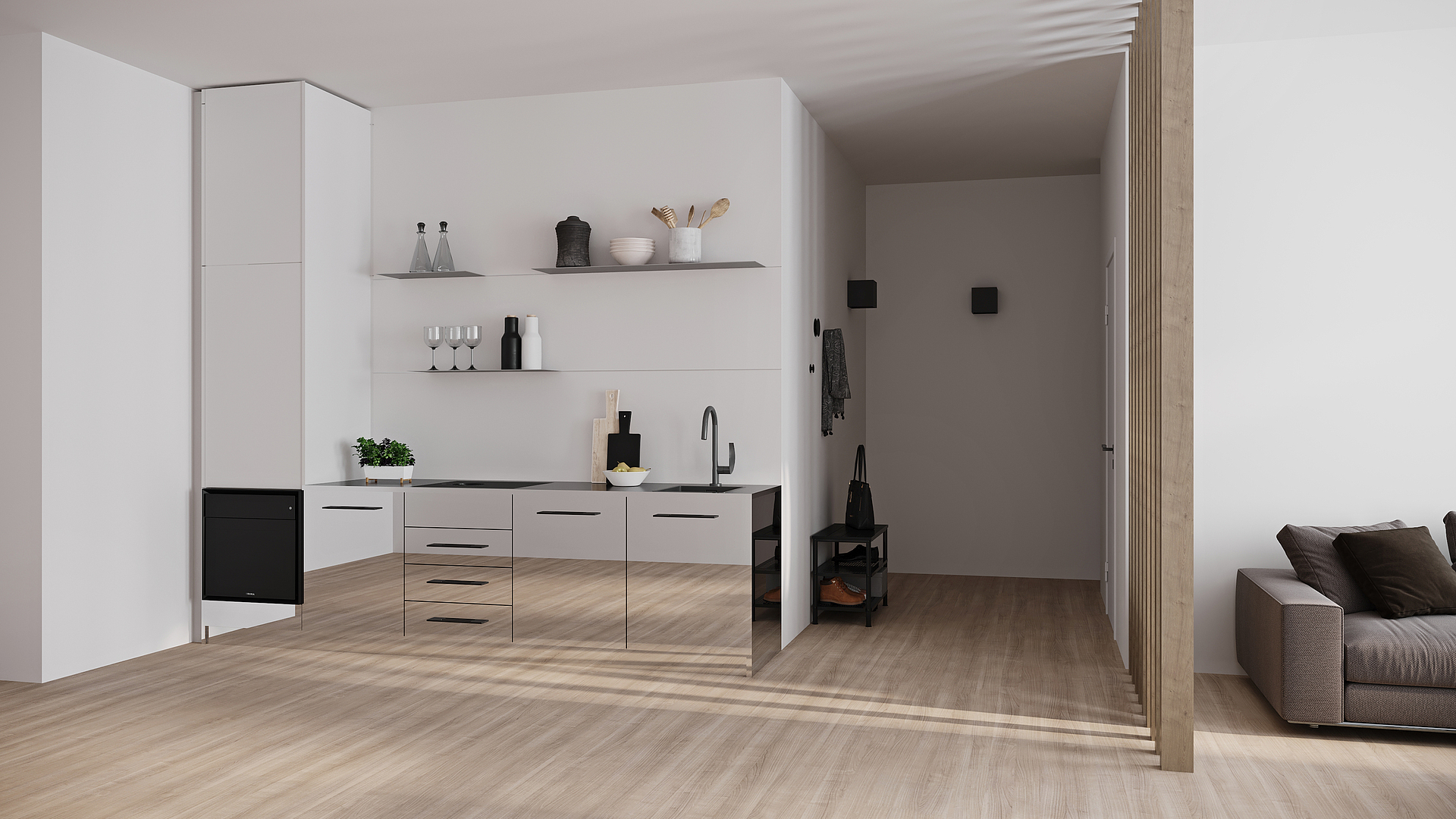
From decluttering to minimalism
Contrary to popular opinion, minimalism doesn’t mean that you have to live in a small space or an uncomfortable manner. Instead, the trend is characterised by clear lines and creates a spacious, relaxing, neat and tidy environment – even in the kitchen. Read on to discover what else lies behind this multifaceted lifestyle.
More than a furnishing style
When you think of a minimalist lifestyle, you may initially expect to bid farewell to all your home comforts. However, minimalism doesn’t return you to humble times, it simply creates space and order. It’s a way of life committed to minimising consumption and focusing on the essentials.
It’s about decluttering instead of having a home or kitchen where every drawer is stuffed to bursting, every wall is adorned with accessories and every single available surface has something placed on. For many people, this initially means a lot of effort – and rubbish. The best solution is not to accumulate unnecessary clutter in the first place.
At the same time, you’ll create a calm environment where you can unwind at the end of a busy, stressful, deadline-packed day. As your senses have to process a great deal during the day, mental relaxation in the evening is all the more important. This is only possible if you’re not flooded with stimuli at home as well. As such, a minimalist interior is not only a matter of taste, but also positively affects your mental health.
Introducing a minimalist lifestyle
Instead of filling your home to bursting with possessions, a minimalist interior style á la tidying queen and organising consultant Marie Kondō exclusively focuses on the things that truly matter – for either practical or emotional reasons. At the heart of this approach is always the question of what you truly need in life and how much you want to consume in a world where resources are scarce.
To transform your home into a minimalist paradise in a stress-free manner, you should start by consuming less. Regular decluttering and tidying can also help you live minimalistically. Items that simply sit there collecting dust or are just moved around from one nook to the next without actually being useful or having any sentimental value can be sold or given away.
Another important factor for a minimalist lifestyle is that all items must have their place and be as multifunctional as possible. The general rule of thumb that less is more also applies here. This is because clear surfaces make your home and your kitchen worktops look tidier and more spacious. They also give your eyes and your mind a rest. Subtle colours, simple furniture and stylish décor also promote relaxation. You can keep your plants, rugs, candles and cushions though.
Tips for efficient decluttering
If you’re now looking around your home and wondering where best to start, try following these simple tips:
- Start with the most disorganised area.
- Put things you want to keep in one box and those you can get rid of in another. You can also use a third box for anything you’re not yet sure if you can live without.
- Items that you no longer need can be donated or sold on various platforms. This is more sustainable than simply throwing them away.
- Don’t take on too much. Decluttering a little each day is less overwhelming than trying to do it all at once.
The hardest step when decluttering is getting started. Once you’ve developed some sort of routine, you’ll even find that tidying, organising and creating space for the essentials can be fun.